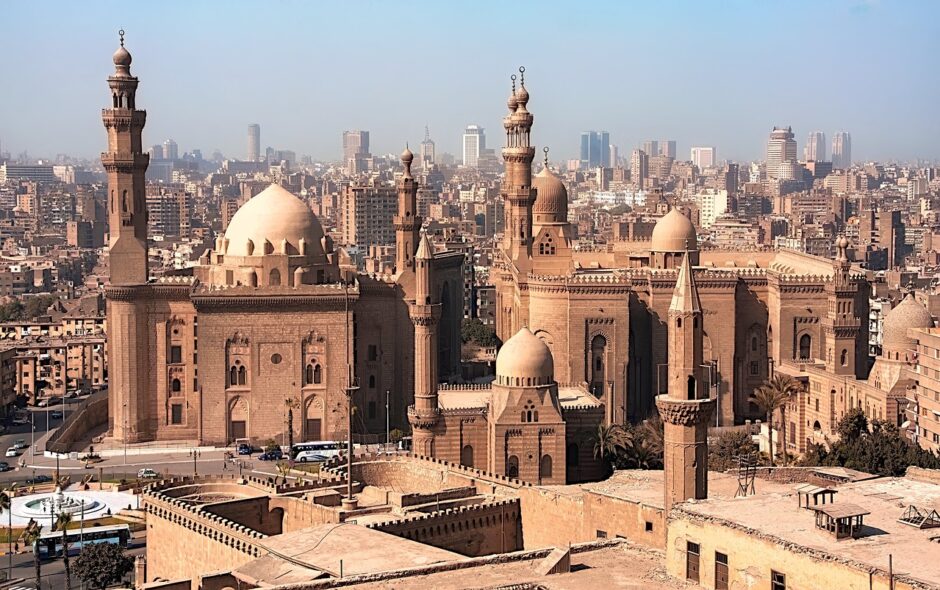Cairo, the sprawling capital of Egypt, stands as a bustling metropolis on the banks of the Nile River, weaving together the threads of ancient history and a modern urban landscape. With its iconic landmarks, vibrant street life, and rich cultural heritage, Cairo is a city that encapsulates the essence of Egypt’s past and present.
At the heart of Cairo lies the historic district of Islamic Cairo, a labyrinth of narrow alleyways, centuries-old mosques, and bustling bazaars. The Al-Azhar Mosque, one of the oldest universities in the world, is a testament to Cairo’s significance as a center of Islamic learning. Nearby, the Sultan Hassan Mosque and the Rifai Mosque stand as architectural marvels, showcasing the intricate beauty of Islamic design.
The city’s skyline is dominated by the majestic pyramids of Giza, a short distance from the bustling urban center. The Great Pyramid of Khufu, the Pyramid of Khafre, and the Pyramid of Menkaure, along with the enigmatic Sphinx, form a timeless tableau that transports visitors back to the era of the pharaohs. The Giza Plateau serves as a reminder of the ancient civilization’s architectural prowess and the mysteries that still captivate the world.
Cairo’s cultural tapestry is further enriched by the Egyptian Museum, home to a vast collection of artifacts spanning millennia. Treasures from Tutankhamun’s tomb, including the famous golden mask, draw visitors into the fascinating world of ancient Egypt. The museum serves as a repository of the nation’s history, preserving and showcasing artifacts that narrate the story of this ancient land.
The Nile River, often referred to as the lifeblood of Egypt, flows through Cairo, providing a scenic backdrop to the city’s daily life. Feluccas, traditional wooden sailboats, navigate the river, offering a tranquil escape from the urban hustle. The bustling riverbanks, with their lively markets and waterfront cafes, reflect the dynamic energy that characterizes Cairo.
Cairo’s Khan El Khalili bazaar is a microcosm of the city’s vibrancy, where narrow alleys are adorned with colorful lanterns, and merchants sell a plethora of goods, from spices and textiles to traditional handicrafts. It’s a place where the past and present converge, and the aroma of spices mingles with the sounds of bargaining and laughter.
In recent decades, Cairo has also embraced modernity, with skyscrapers and contemporary architecture reshaping its skyline. The city’s cultural scene has flourished, with galleries, theaters, and music venues offering a diverse array of artistic expressions. The Cairo Opera House, located on Gezira Island in the Nile, stands as a symbol of the city’s commitment to the arts.
However, Cairo’s growth has not been without challenges. Rapid urbanization, traffic congestion, and environmental issues pose ongoing concerns. Yet, the city’s resilience and ability to adapt are reflected in its dynamic spirit, where the ancient and the contemporary coexist harmoniously.
In conclusion, Cairo stands as a multifaceted city that embraces its rich heritage while navigating the complexities of the modern world. It is a city of contrasts, where the timeless pyramids overlook a bustling metropolis, and ancient traditions blend with the pulse of urban life. Cairo, with its warmth, diversity, and historical significance, remains a captivating destination that continues to draw travelers into the heart of Egypt’s cultural tapestry.



